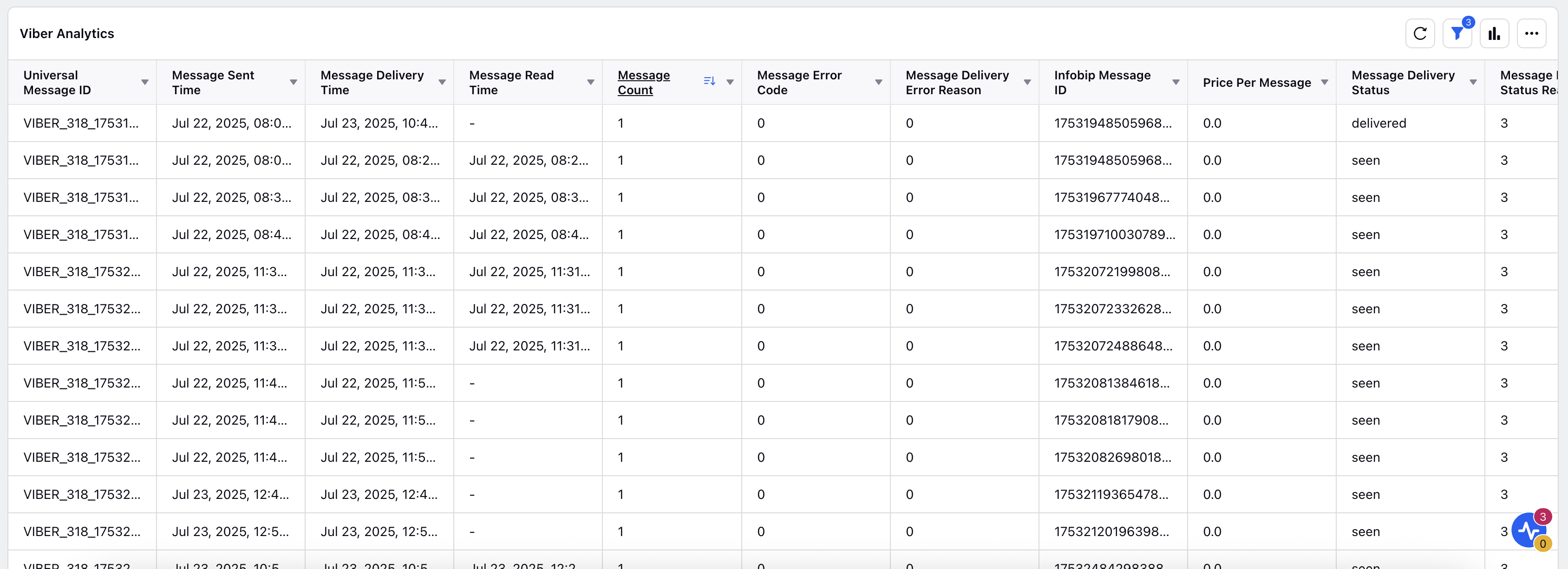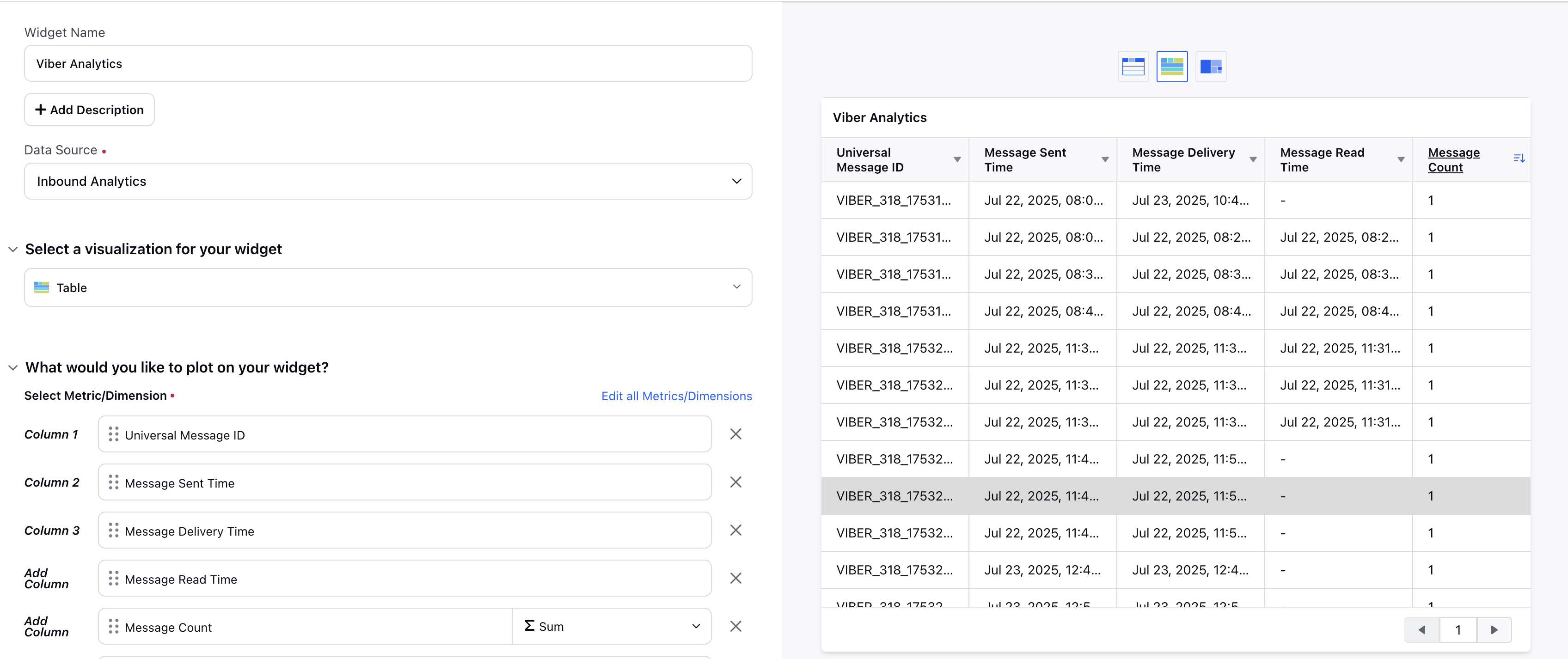Viber Service Reporting
Updated
Viber Service Reporting helps you monitor, analyze, and optimize the performance of your Viber message interactions. Using metrics and dimensions from Inbound Analytics, you can track delivery success rates, read times, costs, and error reasons. This data allows you to assess message effectiveness, troubleshoot issues, and improve overall communication outcomes.

Key Benefits
End-to-End Message Tracking – Monitor each stage of a message’s lifecycle, from sending to delivery and reading.
Cost Transparency – Track and analyze the cost per message to manage budgets effectively.
Performance Insights – Identify patterns in delivery delays, read rates, and failure reasons.
Error Diagnosis – Pinpoint specific delivery issues using error codes and status reasons.
Data-Driven Decisions – Optimize content, timing, and targeting strategies based on real message engagement data.
Common Use Cases
Use Case | Description |
Campaign Performance Monitoring | Evaluate how many messages were delivered and read for a marketing or notification campaign. |
Cost Analysis | Measure the cost per 1,000 messages and track trends over time to manage messaging expenses. |
Failure Trend Analysis | Identify the most common delivery failure reasons to improve contact data quality or messaging strategy. |
Engagement Tracking | Calculate read rates to assess how well messages are resonating with recipients. |
Provider Performance Verification | Audit delivery metrics from provider (Infobip) to ensure SLA compliance. |
Configuring Viber Reporting
Follow these steps to configure extension reporting for Viber:
Step 1: Create a Reporting Widget
Navigate to Care Reporting.
In a reporting dashboard, click + Create Widget to build a new report.
For detailed instructions, see Create a Reporting Widget.

Step 2: Select the Data Source
In the widget setup screen, select Inbound Analytics in the Data Source dropdown.
Step 3: Add Metrics and Dimensions
From the Inbound Analytics source, add the relevant metrics and dimensions you want to track.
Optionally, apply filters to refine the report by:
Account
Status code
Supported Dimensions
Dimension | Description |
Universal Message ID | A unique identifier for the message across all systems. |
Message Sent Time | The timestamp when the message was sent from the system to Viber. |
Message Delivery Time | The timestamp when the message was successfully delivered to the recipient’s device. |
Message Read Time | The timestamp when the recipient opened and read the message. |
Message Error Code | A numeric code returned when message delivery fails, indicating the type of error. |
Message Delivery Error Reason | A descriptive reason for delivery failure, such as “Invalid number” or “Recipient blocked.” |
Infobip Message ID | The unique identifier assigned to the message by Infobip, the Viber delivery provider. |
Price Per Message | The cost charged per successfully sent message. |
Message Delivery Status | The final state of the message, such as Delivered, Read, or Failed. |
Message Delivery Status Reason | Additional explanation for the delivery status, such as “Read on device” or “Undeliverable.” |
Currency | The currency used for the Price Per Message field. |
Supported Metric
Metric | Description |
Message Count | The total number of messages sent, including successful deliveries and failed attempts, within the selected time frame. |
Viber Service Reporting provides a structured way to track message performance, delivery reliability, engagement, and costs. By combining the right metrics, dimensions, and filters, you can create reports that highlight trends, identify issues, and measure the effectiveness of your messaging strategy.